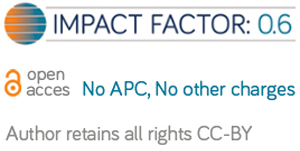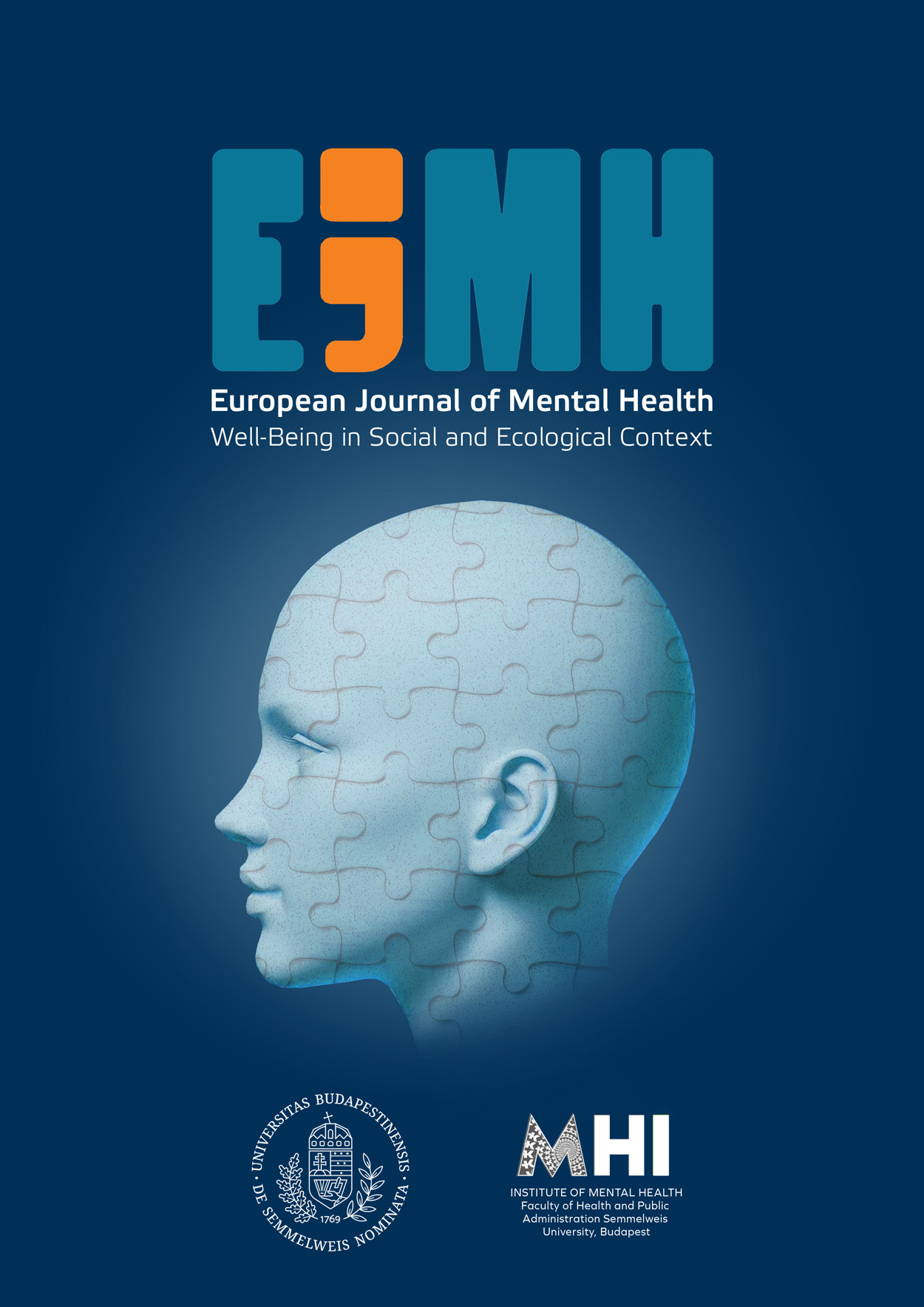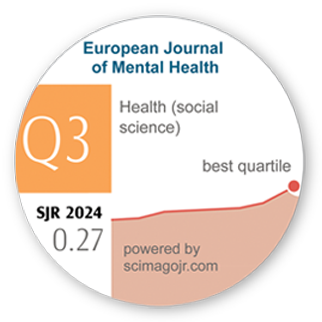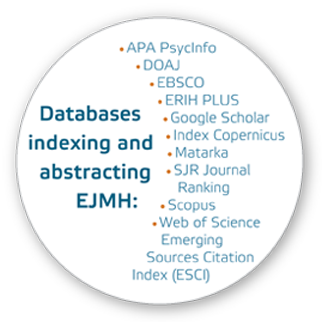An Empirical Study of Ancient Wisdom. Effect of Anasakti (Non-Attachment) and Ahamkara (Ego) on Well-Being Amongst Indians
DOI:
https://doi.org/10.5708/EJMH.17.2022.3.6Keywords:
non-attachment, ego, well-being, yoga psychology, IndiaAbstract
Introduction: According to Indian psychology, anasakti (non-attachment) and ahamkara (ego) play a significant role in determining true happiness.
Aims: To study the role of anasakti (non-attachment) and ahamkara (ego) on the level of well-being amongst Indian adults.
Methods: For the current study, 240 educated, urban Indian adults (Females = 104, Males = 136) were surveyed to investigate the relationship of anasakti (non-attachment) and ahamkara (ego) with well-being variables.
Results: Anasakti (“non-attachment”) was revealed to be a significant factor in ensuring life satisfaction and experiencing positive emotions. Although ahamkara (“ego”) contributed significantly toward higher cognitive well-being and affective states, it better predicted negative emotions.
Conclusions: The current study’s findings may widen our understanding of “What makes people happy?” and may add to the global well-being literature.
References
Agrawal, M. M. (1982). Philosophy of non-attachment: The way to spiritual freedom in Indian thought. Motilal Banarsidass.
Agrawal, J. & Cornelissen, M. (2021). Yoga and positive mental health. In S. Varambally, S. George, T.M. Srinivasan, & H. Bhargav (Eds.)., The science and art of yoga in mental and neurological health care (pp. 221–227). Jaypee Brothers Medical Publishers.
Agrawal, J., Murthy, P., Philip, M., Mehrotra, S., Thennarasu, K., John, J. P., Girish, N., Thippeswamy, V., & Isaac, M. (2010). Socio-demographic correlates of subjective well-being in urban India. Social Indicators Research, 101(3), 419–434.
https://doi.org/10.1007/s11205-010-9669-5
Agrawal, S., & Jaiswal, S. (2013). Anasakti: Stress and coping in old age. Indian Journal of Gerontology, 27(4), 665–673.
Aloisio, L. D., Gifford, W.A., McGilton, K. S., Lalonde, M., Estabrooks, C.A., & Squires, J. E. (2019). Factors associated with nurses’ job satisfaction in residential long-term care: The importance of sorganizational context. Journal of the American Medical Directors Association, 20(12), 1611–1616.
https://doi.org/10.1016/j.jamda.2019.06.020
Anālayo, B. (2019). Adding historical depth to definitions of mindfulness. Current Opinion in Psychology, 28, 11–14,
https://doi.org/10.1016/j.copsyc.2018.09.013
Aurobindo, S., (2005). The life divine. Sri Aurobindo Ashram Press.
Banavathy, V. K., & Choudry, A. (2014). Understanding happiness: A Vedantic perspective. Psychological Studies, 59, 141–152.
https://doi.org/10.1007/s12646-013-0230-x
Banth, S., & Talwar, C. (2012). Anasakti, the Hindu ideal, and its relationship to well-being and orientations to happiness. Journal of Religion & Health, 51(3), 934–946.
https://doi.org/10.1007/s10943-010-9402-3
Barrett, L. F., & Russell, J. A. (1998). Independence and bipolarity in the structure of current affect. Journal of Personality and Social Psychology, 74(4), 967–984.
Bhawuk, D. P. S. (2000). Who attains peace? An Indian model of personal harmony. In J. Prakash & G. Mishra (Eds.), Towards a culturally relevant Psychology (pp.40–48). Agra Psychological Research Cell.
Bhawuk, D. P. S. (2008). Anchoring cognition, emotion and behavior in desire: A model from the Bhagavad-Gita. In K. R. Rao, A. C. Paranjpe, & A. K. Dalal (Eds.), Handbook of Indian Psychology (pp. 390–413). Cambridge University Press.
Bhushan, L. I., & Jha, M. K. (2005). Developing test of asakti and anasakti. Indian Journal of Psychometry and Education, 36(1), 3–9.
Bishoyi, J. (2017). Loksamgrah: An affirmative thought for social reconstruction. International Journal of Research – Granthaalayah, 5(4), 246–249.
https://doi.org/10.29121/granthaalayah.v5.i4.2017.1817
Bowling, N. A., & Hammond, G. D. (2008). A meta-analytic examination of the construct validity of the Michigan Organizational Assessment Questionnaire Job Satisfaction Subscale. Journal of Vocational Behavior, 73(1), 63–77.
https://doi.org/10.1016/j.jvb.2008.01.004
Brazier, C. (2003). Buddhist psychology: Liberate your mind, embrace life. Constable & Robinson.
Budiarto, Y. (2019). Nonattachment, trait mindfulness, meditation practice and life satisfaction: Testing the Buddhism psychology model in Indonesia. Open Journal for Psychological Research, 3(1), 11–22.
https://doi.org/10.32591/coas.ojpr.0301.02011b
Cammann, C., Fichman, M., Jenkins, D., & Klesh, J. (1979). The Michigan Organizational Assessment Questionnaire [Unpublished manuscript]. University of Michigan.
Carreno, D. F., Eisenbeck, N., Pérez-Escobar, A. J., & García-Montes, J. M. (2021). Inner harmony as an essential facet of well-being: A multinational study during the COVID-19 pandemic. Frontiers in Psychology, 12, Article 648280.
https://doi.org/10.3389/fpsyg.2021.648280
Caza, B. B., & Wrzesniewski, A. (2013). How work shapes well-being. In S. A. David, I. Boniwell, & A. Conley Ayers (Eds.), The Oxford handbook of happiness (pp. 693–710). Oxford University Press.
Chandur, J., & Sriram, S. (2018). Anasakti as interpreted and practised in the Bhakti tradition. Psychological Studies, 63, 153–162.
https://doi.org/10.1007/s12646-017-0435-5
Cheung, F., & Lucas, R. E. (2014). Assessing the validity of single-item life satisfaction measures: Results from three large samples. Quality of Life Research, 23(10), 2809–2818.
https://doi.org/10.1007/s11136-014-0726-4
Christopher, J. C. (2018). Let it be: Mindfulness and releasement—Neglected dimensions of well-being. Journal of Theoretical and Philosophical Psychology, 38(2), 61–76.
https://doi.org/10.1037/teo0000078
Collins, A., & Desai, P. (1986). Selfhood in context: Some Indian solutions. In M. White & S. Pollack (Eds.), The cultural transition: Human experience and social transformation in the Third World and Japan (pp. 261–281). Routledge & Kegan Paul.
Dabas, P., & Singh, A. (2018). Bhagavad Gita teachings and positive psychology: Efficacy for semi-urban Indian students of NCR. Cogent Psychology, 5(1), Article 1467255.
https://doi.org/10.1080/23311908.2018.1467255
Dalal, A., & Misra, G. (2010). The core and context of Indian psychology. Psychology & Developing Societies, 22(1), 121–155.
https://doi.org/10.1177/097133360902200105
Dambrun, M., & Ricard, M. (2011). Self-centeredness and selflessness: A theory of self-based psychological functioning and its consequences for happiness. Review of General Psychology. 15(2), 138–157.
https://doi.org/10.1037/a0023059
Diener, E., Emmons, R. A., Larsen, R. J., & Griffin, S. (1985). The satisfaction with life scale. Journal of Personality Assessment, 49(1), 71–75.
https://doi.org/10.1207/s15327752jpa4901_13
Diener, E., & Seligman, M. E. P. (2004). Beyond money: Toward an economy of well-Being. Psychological Science in the Public Interest, 5(1), 1–31.
https://doi.org/10.1111/j.0963-7214.2004.00501001.x
Dittmar, H., Bond, R., Hurst, M., & Kasser, T. (2014). The relationship between materialism and personal well-being: A meta-analysis. Journal of Personality and Social Psychology, 107(5), 879–924.
https://doi.org/10.1037/a0037409
Elias, J. K., Sudhir, P., & Mehrotra, S. (2016). Long-Term engagement in formal volunteering and well-being: An exploratory Indian study. Behavioral Sciences, 6(4), Article 20.
https://doi.org/10.3390/bs6040020
Elphinstone, B., Sahdra, B. K., & Ciarrochi, J. (2015). Living well by letting go: Reliability and validity of a brief measure of non-attachment. OSF Preprints.
https://doi.org/10.31219/osf.io/ew4ns
Elphinstone, B., & Whitehead, R. (2019). The benefits of being less fixated on self and stuff: Nonattachment, reduced insecurity, and reduced materialism. Personality & Individual Differences, 149, 302–308.
https://doi.org/10.1016/j.paid.2019.06.019
European Social Survey. (2015). Measuring and reporting on Europeans’ wellbeing: Findings from the European social survey.
https://www.europeansocialsurvey.org/docs/findings/ESS1-6_measuring_and_reporting_on_europeans_wellbeing.pdf
Gautam, S., & Jain, N. (2010). Indian culture and psychiatry. Indian Journal of Psychiatry, 52(7), 309–313.
https://doi.org/10.4103/0019-5545.69259
Gaur, S. D. (2011). Why I am here? Implications of self and identity for conceptualizing motivation. In R.M.M. Cornelissen, G. Misra & S. Varma (Eds.), Foundations of Indian Psychology (pp. 401–414). Pearson Education.
Goodwin, L. D., & Leech, N. L. (2006). Understanding correlation: Factors that affect the size of r. Journal of Experimental Education, 74(3), 251–266.
https://doi.org/10.3200/JEXE.74.3.249-266
Gupta, K., & Agrawal, J. (2020). Lay meanings and associated experiences of non-attachment (anasakti): A study from India. Journal of Humanistic Psychology. Advance online publication.
https://doi.org/10.1177/0022167820977563
Gupta, K., & Agrawal, J. (2021). Ahamkara: A study on the Indian model of self and identity. International Social Science Journal, 71(239–240), 21–35.
https://doi.org/10.1111/issj.12262
Hoffman, K. T. (2007). A scale development and construct validation study of the Buddhist construct of non-attachment [Unpublished doctoral dissertation]. Fielding Graduate University.
Huxley, A. (1941). Ends and Means: An inquiry into the nature of ideals and into the methods employed for their realization. Chatto and Windus.
Jeste, D. V., & Vahia, I. V. (2008). Comparison of the conceptualization of wisdom in ancient Indian literature with modern views: Focus on the Bhagavad Gita. Psychiatry: Interpersonal and Biological Processes, 71(3), 197–209.
https://doi.org/10.1521/psyc.2008.71.3.197
Keyes, C. L. (2002). The mental health continuum: From languishing to flourishing in life. Journal of Health and Social Behavior. 43(2), 207–222.
Keyes, C. L. M. (2005). Mental illness and/or mental health? Investigating axioms of the complete state model of health. Journal of Consulting and Clinical Psychology, 73(3), 539–548.
https://doi.org/10.1037/0022-006X.73.3.539
Keyes, C. L. M. (2009). Atlanta: Brief description of the mental health continuum short form (MHC-SF). Retrieved November 7, 2022, from
https://peplab.web.unc.edu/wp-content/uploads/sites/18901/2018/11/MHC-SFoverview.pdf
Keyes, C. L. M. (2014). Mental health as a complete state: How the salutogenic perspective completes the picture. In G. F. Bauer & O. Hammig (Eds.), Bridging Occupational, Organizational and Public Health (pp. 179–192). Springer.
https://doi.org/10.1007/978-94-007-5640-3_11
Khaw, D., & Kern, M. (2014). A cross-cultural comparison of the PERMA model of well-being. Undergraduate Journal of Psychology at Berkeley, 8(1), 10–23.
Kjell, O.N.E., Daukantaitë, D., Hefferon, K., & Sikström, S. (2016). The harmony in life scale complements the satisfaction with life scale: Expanding the conceptualization of the cognitive component of subjective well-being. Social Indicators Research, 126, 893–919.
https://doi.org/10.1007/s11205-015-0903-z
Koltko-Rivera, M. E. (2006). Rediscovering the later version of Maslow’s hierarchy of needs: Self-transcendence and opportunities for theory, research, and unification. Review of General Psychology, 10(4), 302–317.
https://doi.org/10.1037/1089-2680.10.4.302
Mills, K. L. (2011). Experiential self-referential processing and autobiographical memory retrieval: A preliminary look. PSU McNair Scholars Online Journal, 5(1), Article 20.
https://doi.org/10.15760/mcnair.2011.190
Mishra, G. (2010). The cultural construction of self and emotion: implications for well-being. In R. Schwarzer and P. A. Frensch (Eds.), Personality, human development and culture: International perspectives on psychological science (pp. 95–111). Psychology Press.
Mulla, Z. R., & V. R., Krishnan (2008). Karma-Yoga, the Indian work ideal, and its relationship with empathy. Psychology and Developing Societies, 20(1), 27–49.
https://doi.org/10.1177/097133360702000102
Martins, E., Salamene, L. C., Lucchetti, A., & Lucchetti, G. (2021). The association of mental health with positive behaviours, attitudes and virtues in community-dwelling older adults: Results of a population-based study. The International Journal of Social Psychiatry, 68(2), 392–402.
https://doi.org/10.1177/0020764021999690
Neff, K. (2003). Self-compassion: An alternative conceptualisation of a healthy attitude toward oneself. Self and Identity, 2(2), 85–102.
https://doi.org/10.1080/15298860309032
Nilsson, H., & Kazemi, A. (2016). Reconciling and thematizing definitions of mindfulness: The big five of mindfulness. Review of General Psychology, 20(2), 183–193.
https://doi.org/10.1037/gpr0000074
Pande, N., & Naidu, R. K. (1992). Anasakti and health: A study of non-attachment. Psychology and Developing Societies, 4(1), 89–104.
https://doi.org/10.1177/097133369200400106
Pande, N., & Tewari, S. (2011). Understanding coping with distress due to physical disability. Psychology and Developing Societies, 23(2), 177–209.
https://doi.org/10.1177/097133361102300203
Pandey, J., & Singh, M. (2015). Asakti-anasakti as mediator of emotional labor strategies and burnout: A study on ASHA workers. Indian Journal of Industrial Relations, 51(1),61–73.
Paranjpe, A. C. (2002). Self and identity in modern psychology and Indian thought. Kluwer Academic Publishers.
Pavot, W., & Diener, E. (2008). The satisfaction with life scale and the emerging construct of life satisfaction. Journal of Positive Psychology, 3(2), 137–152.
https://doi.org/10.1080/17439760701756946
Pearson, M. R., Brown, D. B., Bravo, A. J., & Witkiewitz, K. (2015). Staying in the moment and finding purpose: The associations of trait mindfulness, decentering, and purpose in life with depressive symptoms, anxiety symptoms, and alcohol-related problems. Mindfulness, 6(3), 645–653.
https://doi.org/10.1007/s12671-014-0300-8
Raghuram, N.V. (2007, December 26–28). Ego in Indian philosophy [Paper presentation]. National Seminar on Indian Psychology: Theories and Models, Bangalore, India.
https://www.ipi.org.in/texts/nsip/nsip-abstracts/raghuramnv.php
Rao, K. (2008). Prologue: Introducing Indian Psychology. In K. Rao, A. Paranjpe, & A. Dalal (Eds.), Handbook of Indian Psychology (pp. 1–18). Foundation Books.
https://doi.org/10.1017/UPO9788175968448.002
Rao, D., & Mehrotra, S. (2006). Negotiation of life-tasks and subjective well-being in young adults pursuing professional courses. Psychological Studies, 51(2–3), 144–152.
Reddy, V.M. (1990). Integral yoga psychology: The psychic way to human growth and human potential. Institute of Human Study.
Rekha, K. (1995). Ahamkara and ego functions among neurotics and general population [Unpublished master’s thesis]. University of Mysore.
Ryan, R. M., & Deci, E. L. (2001). On happiness and human potentials: A review of research on hedonic and eudaimonic well-being. Annual Review of Psychology, 52(1), 141–166.
https://doi.org/10.1146/annurev.psych.52.1.141
Sahdra, B. K., Shaver, P. R., & Brown, K. W. (2010). A scale to measure non-attachment: A Buddhist complement to Western research on attachment and adaptive functioning. Journal of Personality Assessment, 92(2), 116–127.
https://doi.org/10.1080/00223890903425960
Sahdra, B. & Shaver, P. (2013). Comparing attachment theory and Buddhist psychology. The International Journal for the Psychology of Religion, 23(4), 282–293.
https://doi.org/10.1080/10508619.2013.795821
Sahdra, B. K., Ciarrochi, J., Parker, P. D., Marshall, S., Heaven, P. (2015). Empathy and non-attachment independently predict peer nominations of prosocial behavior of adolescents. Frontiers in Psychology, 6, Article 263.
https://doi.org/10.3389/fpsyg.2015.00263
Sahdra, B., Ciarrochi, J., & Parker, P. (2016). Nonattachment and mindfulness: Related but distinct constructs. Psychological Assessment, 28(7), 819–829.
https://doi.org/10.1037/pas0000264
Salagame, K. K. K. (2011). Ego and ahamkara: Self and identity in modern psychology and Indian thought. In R. Cornelissen, G. Misra, & S. Varma (Eds.), Foundations of Indian psychology: Concepts and theories (pp. 133–145). Dorling Kindersley.
Salagame, K. K. K. (2013). Well-being from the Hindu/ Sanatana dharma perspective. In S. A. David, I. Boniwell & A. C. Ayers (Eds.), The Oxford Handbook of Happiness (pp. 371–383). Oxford University Press.
Salagame, K. K. K., & Raj, A. (1999). Ahamkara and ego functions among meditators and normals. Journal of Indian Psychology, 17(1), 46–55.
Salagame, K. K. K., Raj, A., Murthy, K. P., Parimala, N., Rekha, K., & Gaur, S. (2005). Concept ahamkara: Theoretical and empirical analysis. In K. R. Rao & S. B. Marwaha (Eds.), Towards a spiritual psychology – Essays in Indian psychology (pp. 97–122). Samvad India Foundation.
Salagame, K. (2014). Ego and ahamkara: Self and identity in modern psychology and Indian thought. In Cornelissen, R., Misra, G., Varma, S. (Eds.), Foundations of Indian psychology: Concepts and theories (2nd ed., pp. 164–173). Pearson Education.
Samson, S., & Arulraj, A. (2007). A study on moderating effects of employee outcomes on HR practices and turnover intentions relationship among ICT professionals in India and Canada [Unpublished doctoral dissertation]. Bharathidasan University.
Seligman, M. E. P. (2011). Flourish: A visionary new understanding of happiness and well-being. Free Press.
Shaw, A. C. (1995). Perceptions of control, justice and hope: A study conducted in the Lillooet community [Master’s thesis, Simon Fraser University]. Summit Research Repository.
http://summit.sfu.ca/item/6877
Shiah, Y.-J. (2016). From self to nonself: The nonself theory. Frontiers in Psychology, 7, Article 124.
https://doi.org/10.3389/fpsyg.2016.00124
Singh, A., & Modi, R. (2011). Indian ancient thought and well-being (happiness). Bilingual Journal of Humanities & Social Sciences, 2(1–2), 1–4.
Singh, K., Bassi, M., Junnarkar, M., & Negri, L. (2015). Mental health and psychosocial functioning in adolescence: An investigation among Indian students from Delhi. Journal of Adolescence, 39(1), 59–69.
https://doi.org/10.1016/j.adolescence.2014.12.008
Singh, K., Junnarkar, M., & Kaur, J. (2016). Positive psychology in India: A review. In K. Singh, M. Junnarkar & J. Kaur (Eds.), Measures of positive psychology (pp. 1–15). Springer.
https://doi.org/10.1007/978-81-322-3631-3_1
Singh, K., & Raina, M. (2015). Development and validation of a test on Anasakti (non-attachment): An Indian model of well-being. Mental Health, Religion & Culture, 18(9), 715–725.
https://doi.org/10.1080/13674676.2015.1084612
Upadhyay, P. P., & Vashishtha, A. C. (2014). Effect of anasakti and level of post job satisfaction on employees. The International Journal of Indian Psychology, 2(1), 100–107.
https://doi.org/10.25215/0201.075
Vaillant, G. E. & Vaillant, C. O. (2005). Normality and mental health. In B. J. Sadock, & V. A. Sadock (Eds.), Kaplan and Sadock's comprehensive textbook of psychiatry (8th ed., pp. 583–98). Lippincott Williams & Wilkins.
Wadhwa, V., & Palvia, S. (2018). Is information technology hacking our happiness?. Journal of Information Technology Case and Application Research, 20(3-4), 151–157.
https://doi.org/10.1080/15228053.2018.1560954
Wang, S. Y., Wong, Y. J., & Yeh, K. H. (2016). Relationship harmony, dialectical coping, and nonattachment: Chinese indigenous well-being and mental health. The Counseling Psychologist, 44(1), 78–108.
https://doi.org/10.1177/0011000015616463
Wayment, H. A., & Bauer, J. (Eds.). (2008). Transcending self-interest: Psychological explorations of the quiet ego. American Psychological Association.
Wayment, H. A., Wiist, B., Sullivan, B. M., & Warren, M. A. (2011). Doing and being: Mindfulness, health, and quiet ego characteristics among Buddhist practitioners. Journal of Happiness Studies, 12, 575–589.
https://doi.org/10.1007/s10902-010-9218-6
Whitehead, R., Bates, G., & Elphinstone, B. (2020). Growing by letting go: Nonattachment and mindfulness as qualities of advanced psychological development. Journal of Adult Development, 27, 12–22.
https://doi.org/10.1007/s10804-018-09326-5
Whitehead, R., Bates, G., Elphinstone, B., Yang, Y., & Murray, G. (2018). Letting go of self: The creation of the non-attachment to self scale. Frontiers in Psychology, 9, 1–12.
https://doi.org/10.3389/fpsyg.2018.02544
Whitehead, R., Bates, G., Elphinstone, B., & Yang, Y. (2021). The relative benefits of nonattachment to self and self-compassion for psychological distress and psychological well-being for those with and without symptoms of depression. Psychology and Psychotherapy, 94(3), 573–586.
https://doi.org/10.1111/papt.12333






